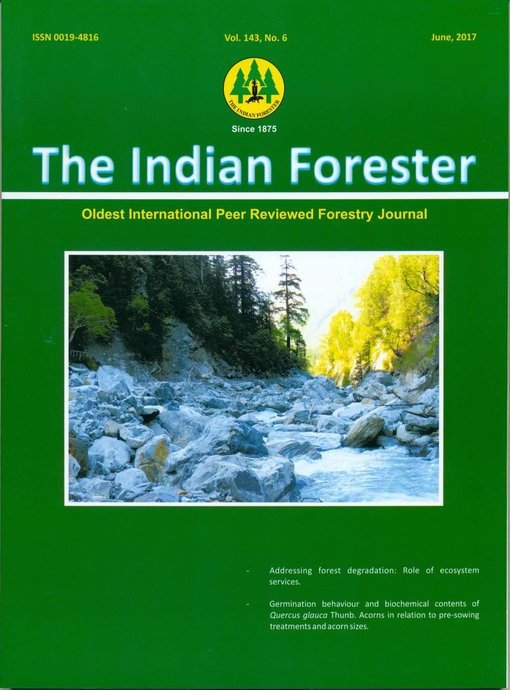Socioeconomic Improvement in the Lifestyle of Tribal BPLS in Nanded City (MS), Using Lac Insect Infested Samanea saman as Model
DOI:
https://doi.org/10.36808/if/2017/v143i6/115842Keywords:
Samanea saman, Lac Insect, Bellow Poverty Line (BPL), Kerria lacca.Abstract
Tribes across the world are known to collect various natural products from the forest since time immemorial. Tribal BPLs are mostly dependent on natural forest products like lac, honey, wax, gum etc. to earn their livelihood. With increasing deforestation it has become a matter of serious concern that lac insects are losing their host plants,which they inhabit. This has imposed the issue of survival of those tribes who depend on such natural products from forest and earn their livelihood. The point here to note is that these tribes are BPLs. Samanea saman (rain trees) is one of the trees commonly infested by lac insects. In Nanded city (Maharashtra State) good density of rain trees can be encountered. Survey carried out in 47 different locations provided a data of 355 rain trees. It was found that out of 355 rain trees 38 were infested by lac insects. Annual collection of lac from ten tree can generate about ` 32,600 in local market annually for 100 Kg of lac. This can create a substantial income if 10 such plants are adapted by one tribal BPL. All 355 rain trees in city Nanded alone can generate income for approximately for 35 tribal BPL. This will also ensure protection and care of all the rain trees as it has been recorded that some of the rain trees died and cut down due to low maintenance in the near past. The present study strongly recommends an innovative method of improvement of economic status of tribal BPLS.References
Chudnoff M. (1984). Tropical Timbers of the World. Agriculture Handbook 607. Forest Service, U.S. Department of Agriculture, Washington, DC.
Flores E.M. (2002). Samanea saman (Jacq.) Merr. In: J.A. Vozzo (ed.). Tropical Tree Seed Manual. Agriculture Handbook 721. USDA Forest Service, Washington, DC.
George W.S. and Craig R. E. (2006). Samanea Saman species profile for pacific island agroforestry www.traditionaltree.orgVer 2.1
http://ilri.ernet.in/~iinrg/regtrain.html last update date on 07-22-2016 and accessed on 11-01-2017
http://www.rd.ap.gov.in/Marketing/MKT_Doc_LAC.pdf
http://www.downtoearth.org.in/coverage/great-depression-of-lac--2250 accessed on 11-01-2017
http://www.teriuniversity.ac.in/mct/pdf/assignment/vs_lakra.pdf accessed on 22-01-2017
http://www.trifed.in/trifed/(S(1kb4un5ihbvbjvbw3mz3aq1l))/Commodity_Price_Report.aspx)accessed on 11-01-2017
Longwood F.R. (1971). Present and Potential Commercial Timbers of the Caribbean. Agriculture Handbook 207. USDA Forest Service, Washington, DC.
Panya M., Nisakorn K., Suneeporn S. and Prapaporn C. (2016). Supply Chain Management of Lac Production in Mae Tha District, Lampang
Province, Thailand, Journal of Agricultural Technology, 12(7.2): 2233-2243
SharmaK.K., Jaiswal A.K. and Kumar K.K. (2006). Role of lac culture in biodiversity conservation : issues at stake and conservation strategies Current Science, 91 (7):1-2 .
Siddique S.A. (2004). Lac – The versatile natural resin, Natural Product Radiance, 3(5): 332-337
Downloads
Downloads
Published
How to Cite
Issue
Section
License
Unless otherwise stated, copyright or similar rights in all materials presented on the site, including graphical images, are owned by Indian Forester.





